|
Getting your Trinity Audio player ready...
|
Choosing the right WordPress page builder is no longer just a design preference—it directly affects page speed, Core Web Vitals, SEO, and ultimately your conversion rate. In 2025, when users bounce after a few seconds and ad costs keep rising, the builder you pick can either accelerate your funnel or suffocate it with bloat. In this guide, we compare Elementor vs Gutenberg and deliver a hands-on Bricks builder review, with clear recommendations for business owners and marketers who care about performance and conversions.
Quick Overview: The Three Modern Options
Gutenberg (the WordPress Block Editor)
- What it is: The native block editor built into WordPress core.
- Why it matters: No heavy runtime for basic layouts; closest to “vanilla” WordPress.
- Best for: Content-led sites, blogs, documentation, and landing pages that don’t need complex visual effects.
Elementor (Plugin Page Builder)
- What it is: A visual, drag-and-drop builder with an enormous widget ecosystem.
- Why it matters: Fast to prototype, friendly for non-technical teams, huge template library.
- Best for: Teams who want speed of creation and a rich UI library without touching code.
Bricks (Theme + Builder)
- What it is: A performance-first visual builder that ships as a theme with clean output and advanced developer controls.
- Why it matters: Strong balance of speed and flexibility, powerful query loops, and component workflows.
- Best for: Agencies and growth teams that want premium UX and fast scores without custom frameworks.
Elementor vs Gutenberg — Strengths, Weaknesses, and Use Cases
Strengths
Gutenberg
- Performance-first by default: Minimal overhead for simple pages; easier to score well on Core Web Vitals.
- Native + future-proof: Built into WordPress; fewer compatibility headaches.
- Block ecosystem emerging: Patterns, block variations, and block themes enable good design systems.
Elementor
- Speed to MVP: Rapid landing page builds with pre-made blocks and templates.
- Huge widget library: Forms, sliders, popups, animations—without extra coding.
- Widespread know-how: Many freelancers/admins already know it, reducing training time.
Weaknesses
Gutenberg
- Design complexity ceiling: Advanced layouts and sophisticated interactions often require custom blocks or CSS.
- Ecosystem fragmentation: Different block libraries vary in quality and performance.
Elementor
- Performance tax: More DOM, more CSS/JS; careless builds can slow LCP/INP.
- Maintenance load: Third-party add-ons can multiply conflicts and updates.
Ideal Use Cases
- Choose Gutenberg when content velocity and maintainability matter most: blogs, guides, resource hubs, SEO landing pages that rely on speed over visual effects.
- Choose Elementor for teams that need rapid prototyping, rich marketing components, and internal autonomy—especially for campaigns, lead gen pages, or multi-widget layouts.
Bricks Builder Review — Performance, Customization, and Unique Features
Performance
- Bricks ships leaner output than many legacy builders and tends to perform strongly on Core Web Vitals with responsible usage.
- Advanced control over CSS loading and conditions helps keep page weight down.
Customization
- Component-driven thinking: Build your own reusable components (headers, cards, CTAs) and keep brand consistency across the site.
- Query Loop power: Craft dynamic archives, related products, and content grids without heavy plugins.
- Design freedom: CSS grid, flexbox, clamp() typography, and responsive controls baked in.
Unique Features
- Theme + builder in one: Global classes, variables, and design tokens simplify systemized design.
- Developer-friendly: Conditions, hooks, custom code injection, and clean markup favor technical SEO and maintainability.
- Scales with you: Works well for complex sites—directories, knowledge bases, WooCommerce stores—without becoming unwieldy.
Trade-offs
- Smaller community than Elementor (but rapidly growing).
- Slightly steeper learning curve if you’ve only used classic page builders.

Side-by-Side Comparison: Speed, SEO, Flexibility, Ease of Use
| Criterion | Gutenberg (Block Editor) | Elementor | Bricks |
|---|---|---|---|
| Baseline performance | Excellent (minimal overhead) | Variable (can be heavy without care) | Very Good–Excellent (lean output) |
| Core Web Vitals | Strong by default | Needs optimization discipline | Strong with best practices |
| SEO readiness | Clean HTML, native headings, easy schema via plugins | Good, but watch widget bloat & DOM size | Clean structure; dev controls help technical SEO |
| Design flexibility | Moderate (needs patterns/CSS for advanced layouts) | High (widgets, templates, animations) | High (grid/flex, components, conditions) |
| Dynamic content | Via core/query loop + block add-ons | Via Pro + third-party add-ons | Native query loops; advanced controls |
| WooCommerce | Solid with block themes | Mature ecosystem, many add-ons | Efficient templates; dev-friendly |
| Learning curve | Low–Medium | Low for beginners | Medium (power-user oriented) |
| Ecosystem & templates | Growing rapidly | Huge and mature | Growing; quality-first |
| Maintenance | Low (fewer moving parts) | Medium–High (add-on sprawl risk) | Medium (more advanced options) |
| Cost | Included with WordPress | Pro features require paid license | Paid license (often one-time/lifetime) |
Bottom line: If “Elementor vs Gutenberg” is your question, choose Gutenberg for speed and simplicity; choose Elementor if your team needs a rich visual toolbox. If you want both performance and deep control, our Bricks builder review puts Bricks at the top for conversion-driven builds in 2025.
Recommendations by Conversion Goal and Business Type
- Local Services / Lead Gen (fast pages, clear CTAs):
- Best pick: Bricks for speed + reusable CTA components.
- Alternative: Gutenberg if you keep layouts simple and rely on Patterns.
- Use Elementor if your non-technical team wants to build landing pages often—just follow the performance checklist below.
- Content-Heavy Blogs / SEO Hubs:
- Best pick: Gutenberg (lightweight, native, scalable).
- Alternative: Bricks if you want custom archives and dynamic lists with strong performance.
- E-commerce (WooCommerce):
- Best pick: Bricks for flexible product/card components and optimized templates.
- Alternative: Elementor if your team needs polished product widgets and marketing add-ons out of the box.
- Agencies / In-House Growth Teams:
- Best pick: Bricks for component libraries, design tokens, and performance control.
- Alternative: Elementor for rapid prototyping and client-editable sections.
Example Workflows (Realistic, Conversion-Focused)
Workflow A — Building a High-Converting Landing Page in Gutenberg
- Start with a block theme and global styles (typography scale, color tokens, container widths).
- Create a Pattern library: hero, social proof, feature grid, pricing, FAQ, CTA.
- Assemble the page using Patterns; keep images optimized (WebP) and limit custom blocks.
- Conversion polish: Add a native form block (or WPForms/Fluent Forms), sticky “Book Now” anchor, and basic schema via SEO plugin.
- Ship fast: Test Core Web Vitals, adjust media and spacing, publish.
Workflow B — Rapid Campaign Build with Elementor
- Spin up a campaign template using containers (not legacy sections) to reduce markup.
- Import only essential widgets (hero, testimonial carousel, pricing, form). Avoid global add-on packs you don’t need.
- Use global styles & tokens for typography and colors to keep CSS compact.
- Add conversion helpers: exit-intent popup (sparingly), sticky CTA, scarcity block.
- Performance pass: Dequeue unused widgets, enable CSS print to file, minimize animations, and lazy-load heavy widgets.
Workflow C — CRO-Ready Architecture in Bricks
- Define design tokens: color palette, spacing scale, type ramp using clamp().
- Create reusable components: testimonial card, feature row, comparison table, CTA banner—save to the Bricks library.
- Build dynamic lists with Query Loops (e.g., case studies, blog highlights) and conditional badges (e.g., “New”, “Top Rated”).
- Template WooCommerce product cards for speed and consistent micro-copy.
- Optimize CSS loading, set conditions to render only what’s needed, and validate Core Web Vitals before launch.
Practical Tips to Optimize Any Builder for Better Conversions
Speed & Stability (Core Web Vitals)
- Optimize images (AVIF/WebP), use
srcsetand proper dimensions; lazy-load below-the-fold media. - Limit animations: keep them short and GPU-friendly; avoid animating layout properties that trigger reflow.
- Use a modern caching stack (page + object cache), HTTP/2 or HTTP/3, and a reputable CDN.
- Defer non-critical JS; preload critical fonts; use system fonts or 1–2 font families max.
- Keep the DOM lean—fewer nested containers, fewer widgets per section.
Conversion UX
- Keep hero sections crisp: 1 primary benefit, 1 visual, 1 obvious CTA.
- Add real social proof close to the fold: logos, star-ratings, short quotes.
- Use contrast-tested CTAs, consistent button labels (“Get Quote”, “Start Free Trial”).
- Reduce form friction: ask only what you need; provide autofill and mobile-friendly inputs.
- Add trust elements near conversion points: guarantees, SLAs, security badges, policies.
SEO & Tracking
- Semantic headings (H1–H3), descriptive alt text, meaningful anchor text.
- Lightweight schema via your SEO plugin; avoid duplicative schema stacks.
- Track with GA4 + GTM; run A/B tests (e.g., Split Hero headline vs. value prop).
- Monitor INP (interaction latency) alongside LCP/CLS; slow interactions kill conversions.
Maintenance
- Minimize plugin count; prefer first-party functionality over stacks of add-ons.
- Keep a staging site; update builders and themes on staging first.
- Document your design system and component usage to keep future edits consistent.
Choosing the Right WordPress Page Builder (Quick Scenarios)
- “We want the fastest blog and resource hub.” Go Gutenberg.
- “We need a flexible marketing toolkit and non-devs will build pages.” Go Elementor with strict performance rules.
- “We want high performance, custom components, and CRO flexibility.” Go Bricks.
If you’re still weighing Elementor vs Gutenberg, ask: Do we need advanced visual widgets today? If not, Gutenberg’s simplicity often converts faster at lower maintenance cost. If you want the best blend of speed and control without heavy custom code, our Bricks builder review verdict is clear: Bricks wins for most conversion-focused builds in 2025.
Bonus: Mini Comparison Table for CRO Priorities
| CRO Priority | Best Default Choice | Why |
|---|---|---|
| Fastest first paint | Gutenberg | Minimal overhead; easy to keep lean |
| Complex component library | Bricks | Systemized components + conditions |
| Non-technical editors | Elementor | Familiar UI, massive widget set |
| Dynamic archives/grids | Bricks | Powerful query loops & conditions |
| Lowest long-term maintenance | Gutenberg | Fewer moving parts; native future-proof |
Conclusion & Call to Action
In 2025, the WordPress page builder you choose shapes your site’s speed, SEO, and conversion rate as much as your copy and offers do.
- Gutenberg shines for lean, content-first sites where speed and simplicity win.
- Elementor accelerates non-technical teams and rapid landing page production—so long as you enforce performance discipline.
- Bricks delivers the sweet spot for most CRO-driven businesses: strong Core Web Vitals, reusable components, and developer-grade control without sacrificing visual design.
If you want expert guidance—or you’d like us to audit your current stack and rebuild critical templates for speed and conversions—let’s talk. Explore our WordPress design and CRO services at https://krotovstudio.com/.
